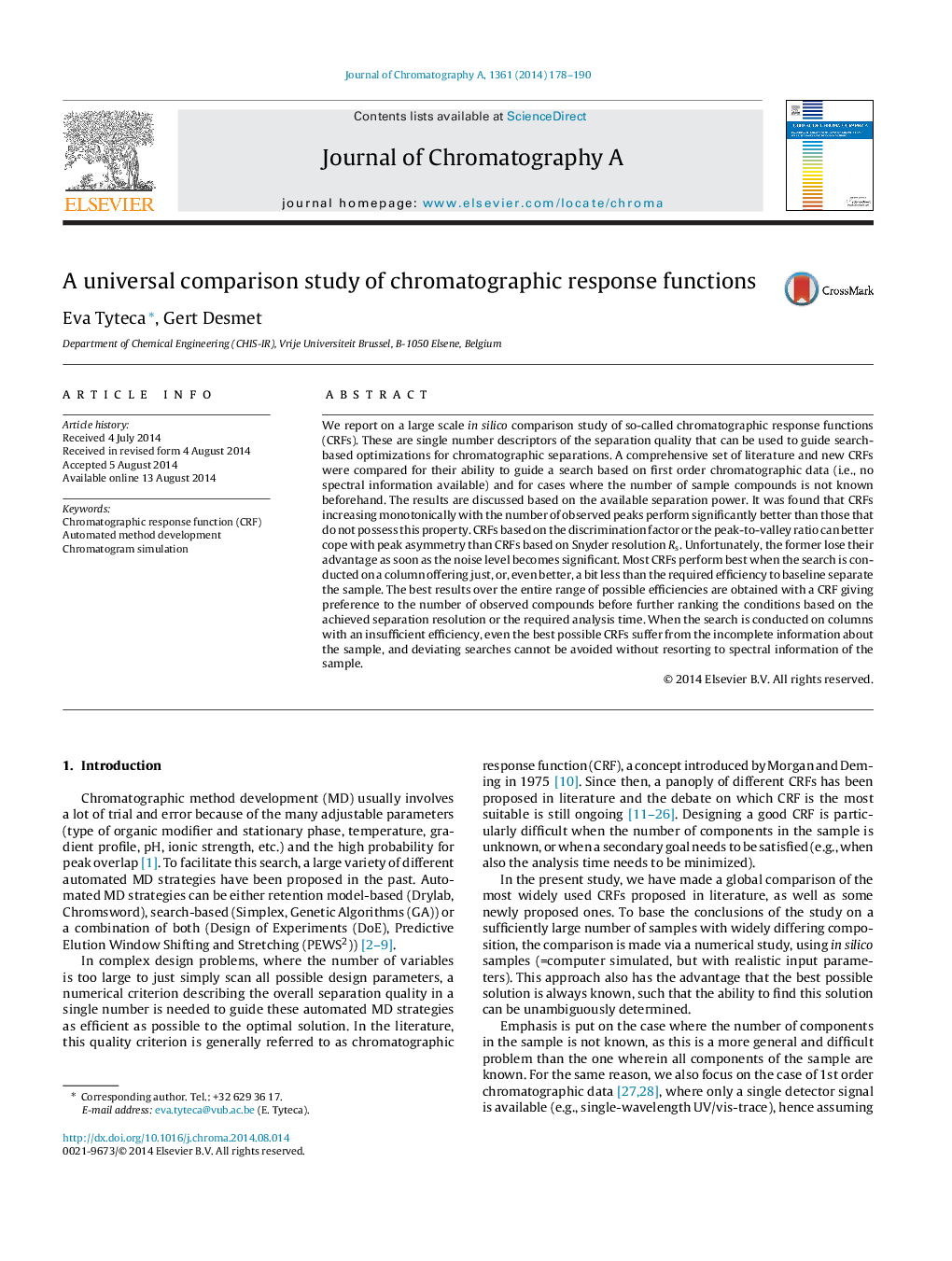| Article ID | Journal | Published Year | Pages | File Type |
|---|---|---|---|---|
| 1199299 | Journal of Chromatography A | 2014 | 13 Pages |
Abstract
We report on a large scale in silico comparison study of so-called chromatographic response functions (CRFs). These are single number descriptors of the separation quality that can be used to guide search-based optimizations for chromatographic separations. A comprehensive set of literature and new CRFs were compared for their ability to guide a search based on first order chromatographic data (i.e., no spectral information available) and for cases where the number of sample compounds is not known beforehand. The results are discussed based on the available separation power. It was found that CRFs increasing monotonically with the number of observed peaks perform significantly better than those that do not possess this property. CRFs based on the discrimination factor or the peak-to-valley ratio can better cope with peak asymmetry than CRFs based on Snyder resolution Rs. Unfortunately, the former lose their advantage as soon as the noise level becomes significant. Most CRFs perform best when the search is conducted on a column offering just, or, even better, a bit less than the required efficiency to baseline separate the sample. The best results over the entire range of possible efficiencies are obtained with a CRF giving preference to the number of observed compounds before further ranking the conditions based on the achieved separation resolution or the required analysis time. When the search is conducted on columns with an insufficient efficiency, even the best possible CRFs suffer from the incomplete information about the sample, and deviating searches cannot be avoided without resorting to spectral information of the sample.
Keywords
Related Topics
Physical Sciences and Engineering
Chemistry
Analytical Chemistry
Authors
Eva Tyteca, Gert Desmet,
